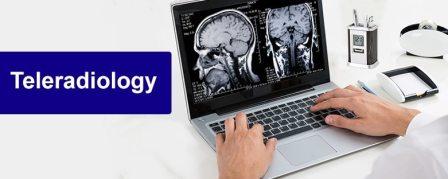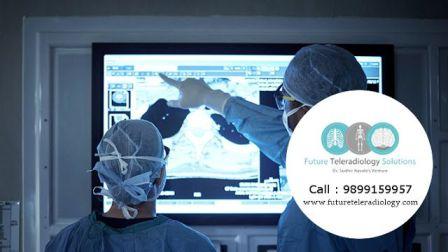Teleradiology is an advancement in radiology that has facilitated healthcare and saved many lives. Technology has brought a paradigm shift in the field of radiology and healthcare as a whole. At a time when technology is improving lives, teleradiology- a technological miracle is focusing on improving patient care and experience. When crucial reports like MRI, CT Scan, X rays, etc need to be interpreted urgently and an expert might not be available, it can delay treatment costing the patient’s life. Here teleradiology has a significant role to play.
Teleradiology centers are engaged 24×7 to extend assistance to doctors and healthcare professionals need quick analysis of the reports. This is just the basic assistance and guidance teleradiology can extent. But, along with this, teleradiology is making a quantum leap on the edifice of technology.
Let us look at how technology can transform teleradiology in the near future. These possibilities might appear unimaginable to many of us but, the reality is way beyond our imagination today. Infact this journey of transforming teleradiology has already begun. Let us see how?
Impact of cloud on teleradiology:
Cloud is a technological phenomenon that has impacted businesses, communication and our lives too. Thus, teleradiology and healthcare is not bereft of its impact. With a seamless cloud architecture, healthcare and diagnostic centers can store images on cloud – virtual data centers thus, setting free the space of offline servers.
This can help healthcare sector to save costs by using cloud-based software. Images can also be accessed at different places across geographies, without too much hassle, saving time and other resources too. Let us suppose the PACS server fails, with cloud access to reports and images won’t be interrupted. The productivity and access to information doesn’t suffer.
Physicians get seamless access to patient images as and when images are uploaded. Unnecessary and duplicate scans are now things of the past.
Healthcare sector supported by cloud technology will lead to saving costs, whose benefits can be transferred to needy patients.
Artificial intelligence; the ultimate transformer:
AI will look through images and point out the areas of concern. AI will put on priority crucial cases so that the radiologist can adjust his schedule to match the patient needs accordingly.
In future medical institutions are going to embed AI in their system. It will prove to be a valuable asset for teleradiology companies and the patients too.
It doesn’t imply that the needed human touch will be expunged. But AI will prioritize, allocate and alert the humans about cases where attention needs to be given urgently.
Also, AI will be able to sift through many images quickly and prioritize accordingly. Radiologist are less in number especially experts in certain field.
At present the burden on radiologists in tremendous and burnout is high among them. With the help of AI the mounting pressure on them will lessen.
Customization:
Healthcare prioritizes customer focused approach. The patient is now getting facilities that couldn’t be accessible in the past.
Now the customers are able to interact with experts who give their opinions and the case results can be discussed online.
Now companies are keen on customer focused interactions by letting them converse and communicate with teleradiologists online. Thus, teleradiology allows patients to have second opinion much more easily than before. This facility will be popular in the coming years.
Workflow management will be more efficient:
In the near future, teleradiology will surpass the limited reach of PACS and RIS system. They will become more efficient and easier to use.
The intelligent workflow management software will in future go beyond just viewing images and reporting the main features of the image. It will include smart tools that will easily direct images efficiently across internet to the radiologist with the apt expertise at that particular time.
Such workflow tools will collaborate tools that allows radiologist to communicate and discuss cases with other radiologist or clinicians to point out problem areas in the CT scan or may be the MRI scan in a virtual environment. Analytical tools will be used which can render better results.
If you are looking for teleradiology solutions get in touch with our team. We are available for our customers 24×7 all 365 days of the year.
Connect with our team https://www.futureteleradiology.com/contact.html
to know more about our services https://www.futureteleradiology.com/teleradiology-services.html.
Our expert team will be glad to assist you.
Frequently asked questions
Answer: Teleradiology Service enables to pay you only on per exam basis. Teleradiology refers to the practice of a radiologist interpreting medical images, where the images are generated, while not physically present in the location.
Answer: In India, The average salary for a Radiologist is Rs. 50,000/- per month.
Yearly Average salary paid to the Radiologist is Rs 545,000/- pa.
Answer: A radiologist is a medical doctor who specializes in the diagnosis and treatment of disease and injury by using medical imaging technologies, such as MRI and CT.
Answer: It is a demanding profession. The career in the field of radiography is very extensive. Recently, the demand of radiographers has been increased, with the development in technologies the medical science created a new and wide scope in radiology.
Answer: Interventional radiologists make small incisions, usually in your abdomen, and use needles and catheters to treat conditions inside your body. Medical images are used to guide their catheters through your blood vessels, arteries, and organs.

